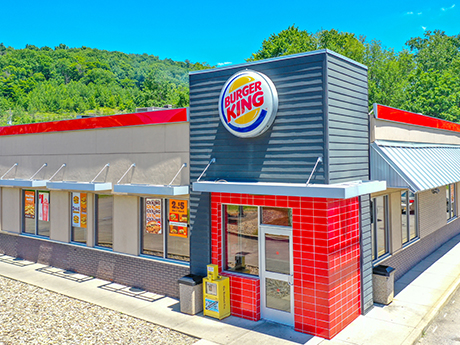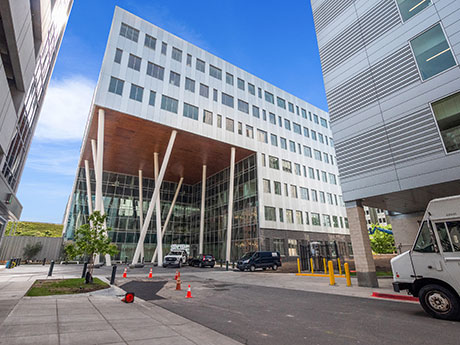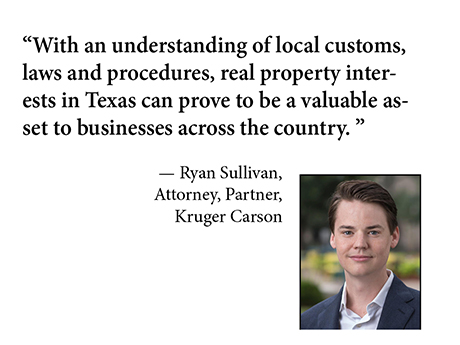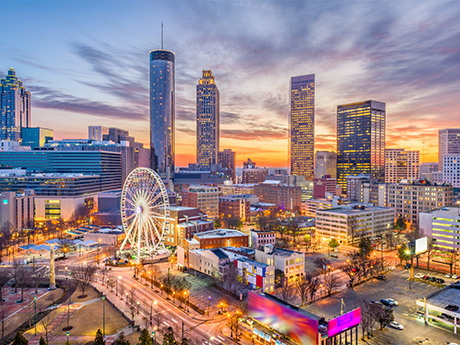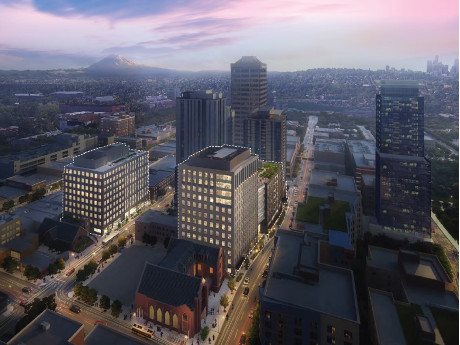By Tom Georges, investment sales broker, Northmarq The U.S. economy reported annualized growth of 2.6 percent in gross domestic product (GDP) in the third quarter, thereby avoiding a third consecutive quarter of negative growth. This positive news can be easily tempered by the fact that the growth was greatly affected by trade and inventory numbers, which were skewed as a result of world events like the war in Ukraine. But the news of growth was welcomed in an economy that has been starved for something positive for most of the year. Compounding the economic caution in the absence of sustained economic growth, of course, is the strain that inflation has inflicted on all Americans. In response to 40-year inflationary highs, the Federal Reserve has been forced to react with its primary inflation-countering tool: increasing interest rates. In early November, the Fed raised short-term rates to their highest level since January 2008. Additional rate hikes are anticipated in December, although signals suggest we’ll see increases in smaller increments going forward. Still, amid all the turmoil and uncertainty, several quick service restaurant (QSR) operators continue to roll out expansion plans and report better-than-expected sales and earnings. Restaurant Brands International (NYSE: QSR) recently …
Market Reports
By David Gagliano, Senior Vice President and Principal, Fuller Real Estate Leasing trends in the metro Denver office market are continuing their slow progression downward. Inquiries from tenants looking to lease office product is down 10 percent from 2021. Concurrently, we have seen an uptick in smaller office users who are looking for space in lieu of their home office. Landlords have been quick to concede to tenants, incentivizing them with extensive quantifiable tenant improvements and lease rates lower than their competition. Anecdotally, it becomes obvious with nearly every prospective tenant that they are viewing multiple properties. Not only are they viewing several properties, but many have several options within the exact vicinity of the subject property. This trend makes it even more critical for landlords to have the best representation from their brokers. This market instability also speaks to the favor landlords are giving to current tenants upon lease renewal, as capturing occupancy prior to vacating becomes vital. With current and most likely future increases in interest rates, we will see a dip in activity in owner-user purchases that should lead to a rise in leasing activity. The suburban markets are still seeing a surge in migration from the downtown …
By Jeff Karger, JLL There’s no doubt that the office market today is much different than what it was five years ago. Employers across the nation have had to adjust their work models, time and time again, to meet the needs of their employees — and those in Grand Rapids are no exception. As landlords, employers and employees adapt to these changes, it’s important to understand the direction of the office market. Below, check out five factors that are defining it. 1. A flight to quality Like many other cities across the nation, Grand Rapids is experiencing a resounding flight to quality. Employers are seeking Class A and trophy spaces to appeal to their employees and offer them an experience, rather than just a cubicle to work in. Some of these office features can include free fitness centers, onsite cafés, coffee shops and restaurants, outdoor terraces and more. Plus, according to JLL research, 59 percent of employees expect to work at a company that supports their health and well-being. Interestingly enough, employees prioritize this over salary — a key reason why companies and landlords alike are investing in amenitized spaces with up-to-date HVAC systems, exercise classes and healthy food options. …
By Dino A. Christophilis, Senior Vice President, CBRE; Daniel Tibeau, Associate, CBRE; and Parker Ksidakis, Associate, CBRE Few sectors were as disrupted by the pandemic as retail. While 2020 proved to be a tumultuous year, the last year and a half have demonstrated the resiliency of retail — both in Seattle and nationally. The Seattle economy is performing well for a recovering retail sector, with continued employment growth and increasing retail spending. The Puget Sound is notorious for its lack of new retail development, and the recent years have been no exception. The environment of increasing demand with a flat level of supply results in positive conditions for existing retail space. Like much of the nation, concerns persist in Seattle around inflation, increasing debt costs and a potential slowing in the global economy. However, the situation in Seattle is more positive and nuanced. Growing Investment Activity Year to date, Seattle is poised to outperform the prior year in terms of total investment dollars. The second quarter of 2022 experienced 65 percent greater investment volume relative to the same quarter in 2021. This figure is particularly notable as 2021 was an exceptional year. Investors deployed pent-up capital that was held during the height of the pandemic. Total retail …
Population, Absorption, New Construction Offer Opportunities in the Denver Multifamily Market
by Jeff Shaw
By Chris Mitton, Advisor, Pinnacle Real Estate Advisors Denver has been seeing major growth of new residents from 2020 through the second quarter of 2022. Denver is gaining many residents from coastal cities due to our lower cost of living, and gains of such tech giants as Conga, RingCentral, Xactly, Slack, and Angi. Since 2020, Denver has added 8,100 jobs in business services and 2,900 jobs in the financial activities sector. Over the last five years population growth in Denver has increased 8 percent compared to the 3.8 percent national average. The multifamily market has benefited from this population growth. Denver has absorbed 6,400 units over the past 12 months, placing it in the top 15 metro areas in the country. Colorado has seen record high prices in single family homes as well, which is pricing out many first-time homebuyers. This is forcing many renters to stay in multifamily apartments. However, if you haven’t been living under a rock, you know that the Federal Reserve has been increasing interest rates at a record pace. The single-family market has seen an increase from 1,200 homes for sale during the start of the year to 7,300 homes in August. With this increase in supply …
By Andy Gutman, Farbman Group This is a complicated and even confusing time for anyone trying to make sense of the commercial real estate market. Conflicting economic indicators and pervasive concerns about inflation — and even the potential for a recession — create a somewhat cloudy outlook, even as promising opportunities remain in some markets. In the Midwest, there are noticeable market-specific differences that give a sense of just how much variability there is across the region. Taking a closer look at the commercial real estate in a city like Detroit — where the commercial real estate investment activity remains high — and comparing it with other Midwest markets in terms of retail activity, receivership rates, commercial real estate taxes, crime rates and urban revitalization efforts, can start to give us a better sense of how and why some Midwest markets are currently viewed as more favorable than others. It can also give us a feel for what investors and commercial real estate decision-makers are likely to be evaluating when they look at how to spend their dollars in the months and years ahead. Detroit looking good What is it about Detroit that makes it an appealing commercial real estate …
By Ryan Sullivan, partner, attorney, Kruger Carson PLLC Over the last few years, record numbers of businesses have relocated to Texas to take advantage of the strong economy, including a red-hot commercial real estate market. Whether a party intends to acquire or lease real property, he or she must be aware of several customs and laws that make Texas real estate transactions different from those in other parts of the country. Below is a high-level survey of some of these issues. Independent Consideration Purchasers of real property in Texas will want to ensure that their purchase agreements include payments of sums that they cannot recoup even if they terminate during their “free look” period. Otherwise, Texas courts have taken the position that purchase agreements are not enforceable against sellers until some portion of the earnest money has become nonrefundable. Deceptive Trade Practices The Deceptive Trade Practice/Consumer Protection Act (DTPA) is intended to protect consumers against unconscionable business practices or unequal bargaining power. The DTPA does not apply to many commercial transactions, but because of the high potential for liability, a carefully drafted waiver should be included in most purchase agreements and leases as a matter of best practice. Closing Costs …
By Lou Coletti, president & CEO, Building Trades Employers Association In the 1930s, the United States was in the throes of the Great Depression. Millions of people lost their jobs, and savings were obliterated overnight. President Franklin Delano Roosevelt seized the opportunity to bring the country back from the brink of economic collapse, creating the Works Progress Administration to put 8.5 million Americans to work building new schools, roads, bridges and water systems. In 2020, the country faced a similar shock to the system as COVID-19 locked down our cities, shuttered businesses and sent entire populations into isolation for months on end, only to contend with a maze of rules and restrictions as the economy reopened. Almost three years later, major metropolises like New York City have an unprecedented opportunity to rebuild both the physical infrastructure and social fabric of their respective regions. Much like in the days of the Great Depression, the construction industry has a key role to play in rebuilding our physical and social infrastructure. This time, however, it’s imperative that we prioritize equity, not only within individual projects but also within the industry at large. The combination of economic upheaval caused by COVID-19 and the …
Atlanta’s prowess within the Sun Belt as the dominant multifamily market did not happen by accident, nor did it occur overnight. Back in the 2000s, Atlanta was still an emerging market that was working to attract new employers while battling a season of oversupply that hampered rent growth across the city’s numerous submarkets. Now, and since the mid-2010s, Atlanta has defined itself as the premier entry point for investors looking to break into the Sun Belt, and its proven track record ensures it will continue serving as a global magnet for relocation, investment and expansion. Atlanta’s diversified economy has attracted some of the nation’s biggest and best names in just a few years’ time. While Silicon Valley has captured the tech world’s eye for decades, global powerhouses such as Microsoft, Google and Meta (Facebook) have started planting their flags in Atlanta with reported goals of adding tens of thousands of highly paid employees by 2030. Tech companies are capitalizing on a strategic opportunity in Atlanta to broaden their workforce in a market that boasts a highly educated and diverse population while providing an attractive cost of living. With respect to Atlanta’s employment growth, the presence of Georgia Tech cannot go …
By Charlie Farra, Senior Managing Director, Newmark The Puget Sound office market has fared better than many peer metro areas during the pandemic. While the market remains tenuous in the region, local office fundamentals have improved to date in 2022. A consistent through the chaos is a flight to quality. If employers expect a return to office, they are being tasked with creating a physical environment that is far more favorable than a home office or local coffee shop. We are referring to this as “commute-worthy real estate.” Energy, collaboration, amenities, views, natural light and safety are some of the main points of focus and, due to current economic conditions, the ability to find such space at discounted pricing is within reason. New office leases are trending toward 75 percent of their pre-pandemic footprint as companies consider how and where to operate their businesses going forward. Professional service companies currently account for the most demand and are in the office more frequently than the technology sector. In tech cities like Seattle, this is a seismic shift from the previous decade, which saw skylines transform from the expansions of Amazon, Microsoft, Meta and Google. Many companies returning to the office are utilizing a hybrid …


